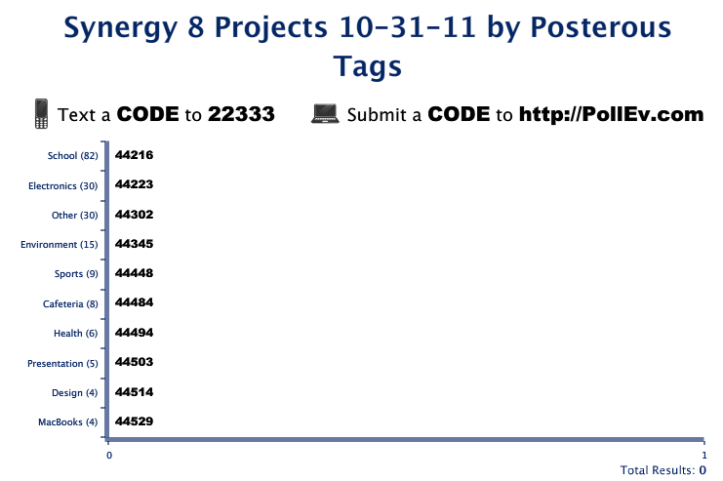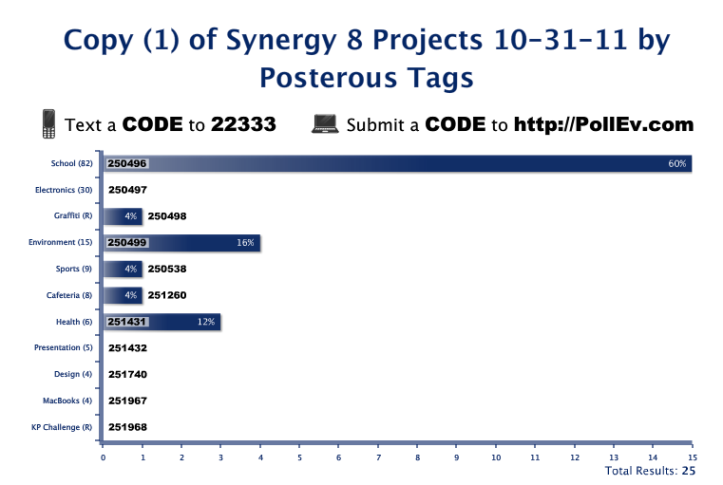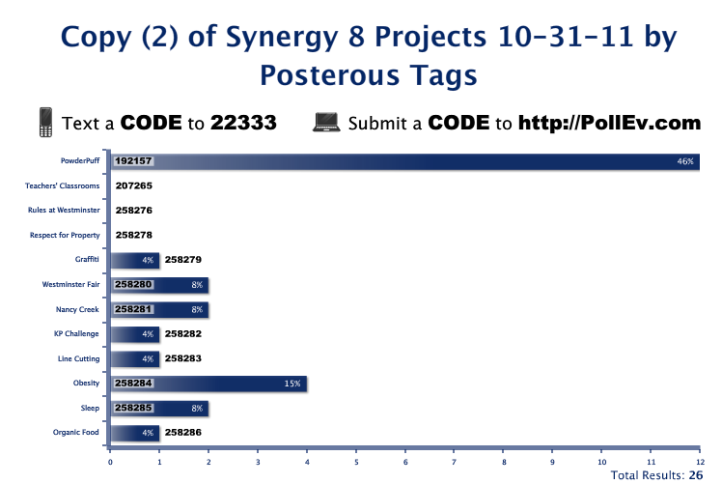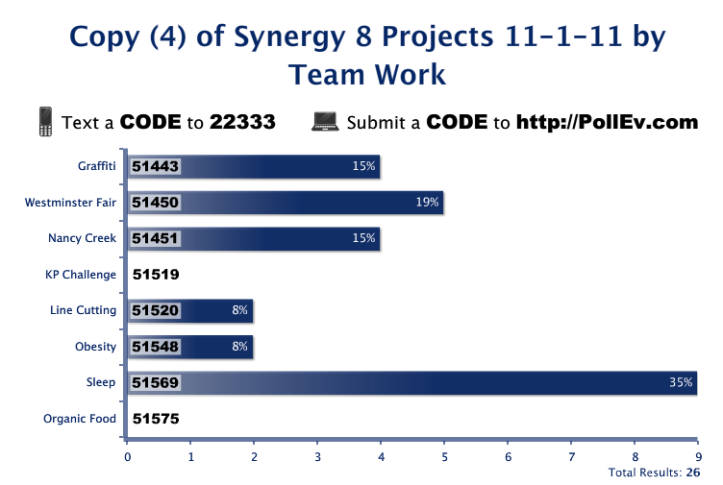Our team has over 300 observation journal entries from which to brainstorm questions and projects. See Synergy: Complexity~Simplicity, Collaboration & Brainstorming for the beginning of this work.
After Monday’s work in class, our learners were prompted to use a quick-write to reflect on the process of narrowing the project ideas using the idea wall as shown in the Synergy: Complexity~Simplicity, Collaboration & Brainstorming blog post.
The prompt: Do you think our Synergy team’s project possibilities are accurately and fairly represented? Why or why not?
“I think they are accurately represented because it’s easy to see and understand, as well as find one in a group of many that you are passionate about. I think we should have a survey. I think they are fair to everyone’s choices, and I like that everyone got three post-it notes.” ~ BM
“I think our Synergy team’s project possibilities are more accurately and fairly represented with the idea wall system, because we thought of what projects we were most passionate about, and then as a class they were organized into groups on the wall, according to their topic. With the other system they were categorized under tags that each of us individually had tagged, in our own language, and five out of 300+ of our tags were represented with that system. I think this left out a lot of other project possibilities that many people in our class feel passionate about. In my opinion, both of these systems were flawed, but I am excited about many of the projects, and with both I was able to see one or two projects that our class had identified, that’d I’d love to start working on.” ~ OK
“I think that the project possibilities that are represented are fairly represented but we have more ideas that we can add to the wall. Also I think the tagging system was very complicated and hard to understand, but we did a good job of cleaning it up and getting everyone to use the same tagging language to tag their posts.” ~ MB
“I believe that our Synergy team’s project possibilities are mostly accurately and fairly represented, but I don’t think that’s true for everyone. Every team member has put there idea up on the idea wall, but everyone does not understand what each idea means.” ~ OV
“Everyone definitely had an equal say in what we have so far, so I think it is apparent that the data we have is fair. I think the idea wall represents our project possibilities accurately, but the Posterous tags do not. I think the idea wall works because it represents what stuck with people. It specifically represents PROJECT ideas, while the tags also represent random observations that projects cannot be done on.” ~ FS
“I don’t think that our Synergy team’s project possibilities are accurately and fairly represented through our Posterous Idea Wall. I don’t think they are accurately represented because we have over 300 posts and there are bound to be posts that are as equally important to us that we forgot about. Others aren’t represented well, because they are thrown into a miscellaneous category. When something is put in a category like this, people tend to skip over it and ignore it. For example when people are choosing project possibilities that interest them, they will probably skip over the “Other” categories and head straight to the ones that have titles. Although there are some down sides to our wall, like the ones I stated above, our Synergy class has made significant progress through this exercise.” ~ DJ
“Well, I did but now I have realized that they really aren’t. Before, I thought that they were because of the sticky notes and Posterous posts, but now I think that they are not. Today at the end of class, we tried to decide on a number of project ideas for the poll. I thought that we should vote because the final numbers were 8 and 12. Someone suggested that we use 10 because that is between 8 and 12 but some people weren’t satisfied.” ~ CC
Based on the feedback from our young learners, we have learned that we need to work with our team to create a better understanding of the “folksonomy” aspect of tagging our observation journal posts in Posterous. From Reinventing Project-Based Learning: Your Field Guide to Real-World Projects in the Digital Age by Suzie Boss and Jane Krauss:
“Folksonomy” refers to the social taxonomy or classification system that evolves as users collectively make sense of what they find on the Web. Users associate “tags” or keywords to the content they bookmark, and they can see how others have treated the same material.
The easiest way to understand the power of bookmarks and tagging is by using it. [p. 22]
We are working to develop a common language with our tags. We are learning by doing as recommended by Boss and Krauss.
After more work and reorganizing the Post-it Notes from the idea wall, the team decided to use Poll Everywhere to formatively assess the team’s thinking and preferences. We (Bo Adams and Jill Gough) created the topics for the poll based on the top 10 tags from our Posterous blog. Our learners decided that these categories, shown below, were similar to the categories from the idea wall.
As you can see, we definitely need to work on developing a common language and understanding of tagging. School, for example, is a pretty broad topic for project selection. There were 82 posts tagged with school in our Posterous observation journal site.
Here are the results after the first poll.
Our learners discovered that their categories were too general. If you wanted to work on the KP Challenge, did you select school or cafeteria? If you were interested in organic food or obesity, did you select environment, cafeteria, or health? Fortunately, the Post-it Notes contained more details. Our learners then asked to eliminate the general categories where they showed no interest and add more specific categories to eliminate some confusion. For a quick glimpse into their discussion and work, we offer the following iMovie*.
Here are the results after the second poll.
Serving as their coaches, we now had to intervene. PowerPuff does not meet the standard of project or problem for our course. We want our learners to work on projects or problems that effect more than half of one grade in our division. Our learners were assured that we would help them work on this project outside of class if they are serious about pursuing this as a community issue. One of our learners made a motion from the floor to poll again with the category PowerPuff removed.
Again, there was discussion coupled with questions. Could the KP Challenge and Line Cutting choices be grouped together?
In groups, our learners’ next task was to use the technique of brainwriting to share, connect, and contribute to the team’s ideas of the selected topic.
Learners are now working on project concepting using a worksheet we adapted from BIE.
For the projects where there are less than 4 teammates, how will they cover the internal, team “leads” for each essential learning needed? Will these teams choose to push forward on the project they have selected, or will they choose to join forces with another team?
[Cross-posted at It’s About Learning]
[*NOTE: iMovie video effects have been added to the movies because of a new school policy about student images on faculty blogs.]




